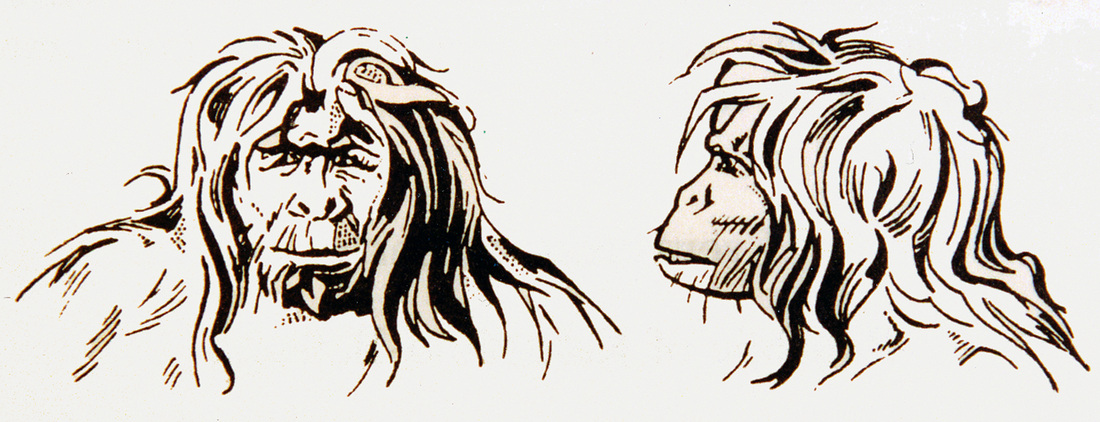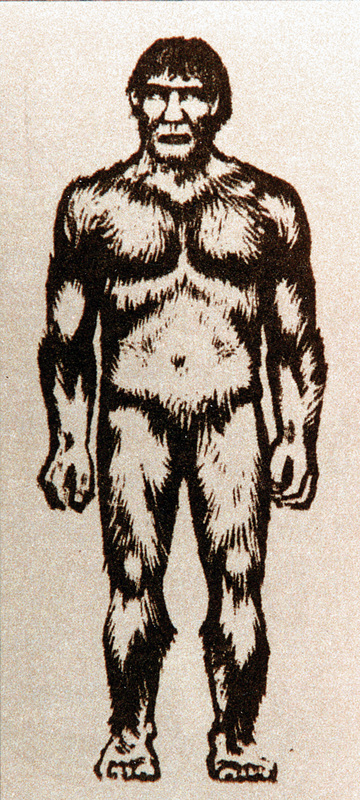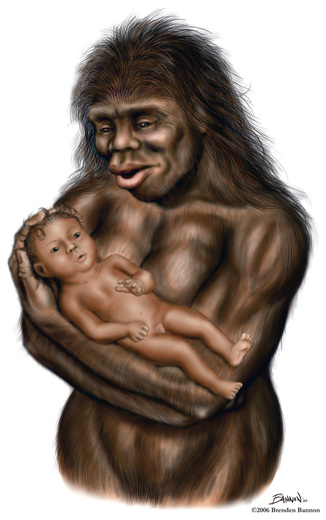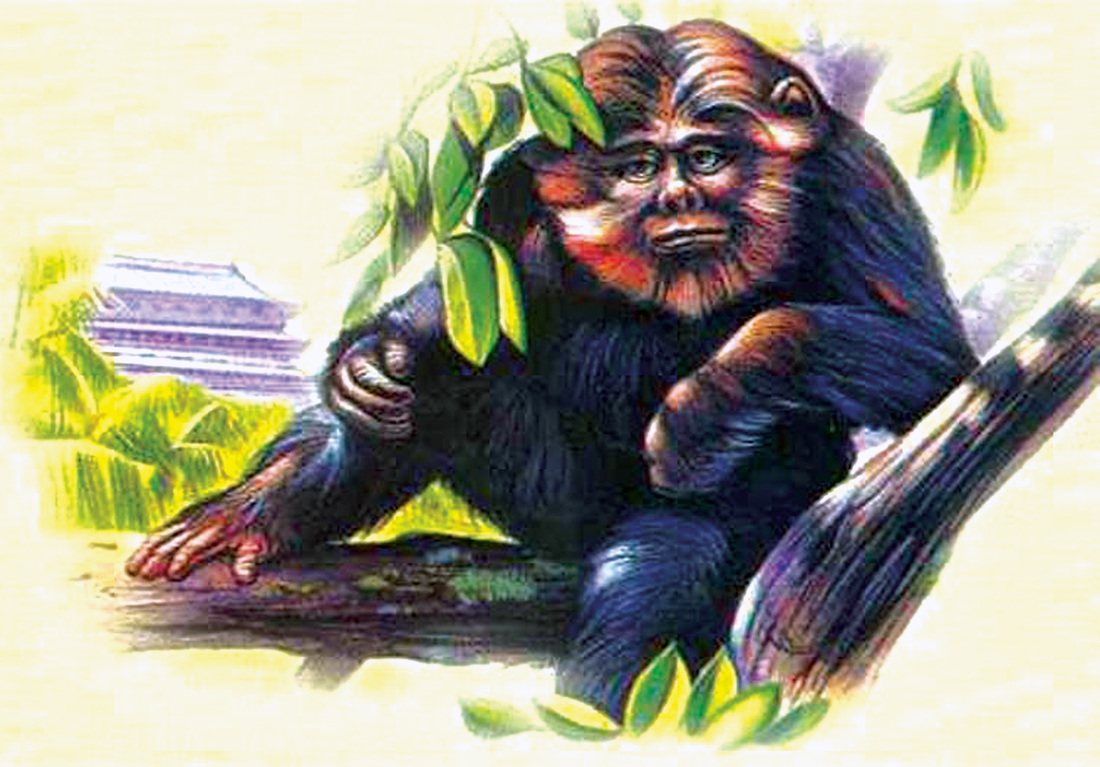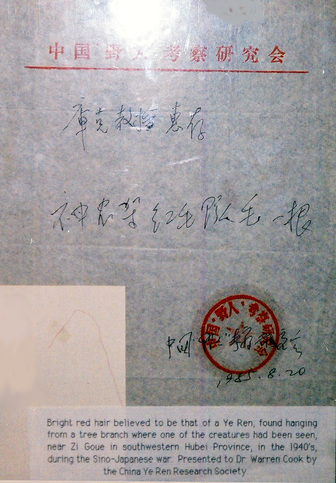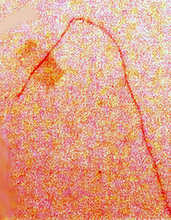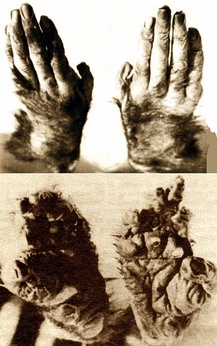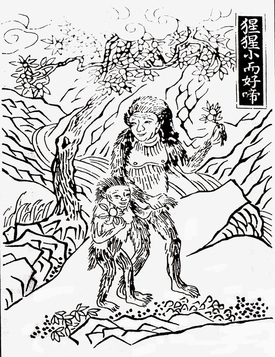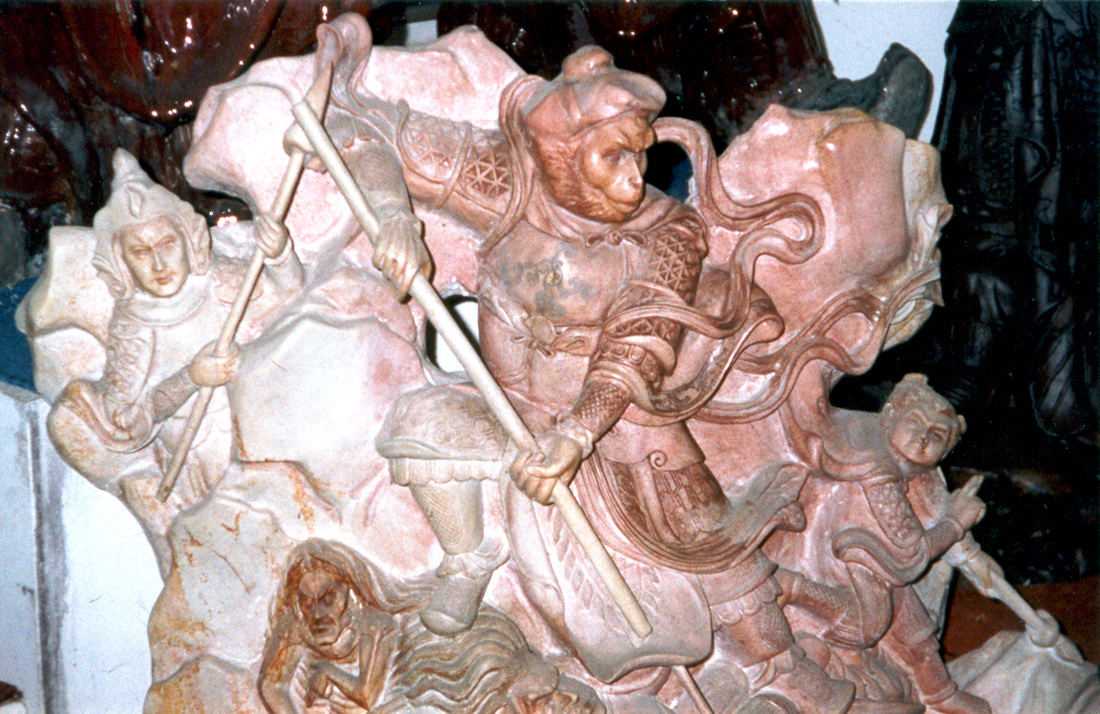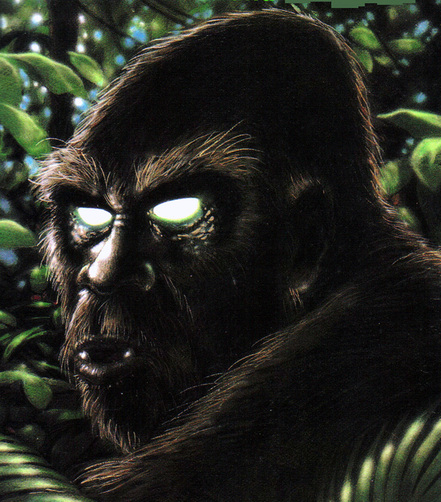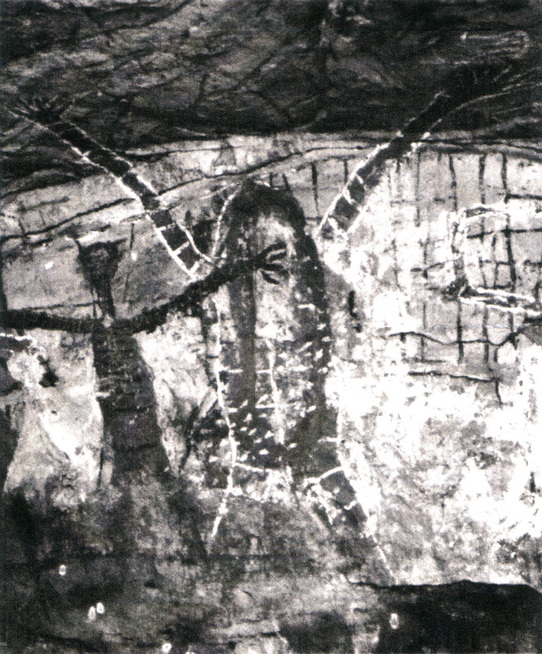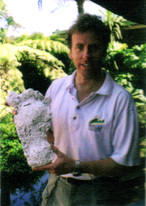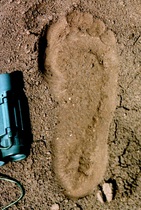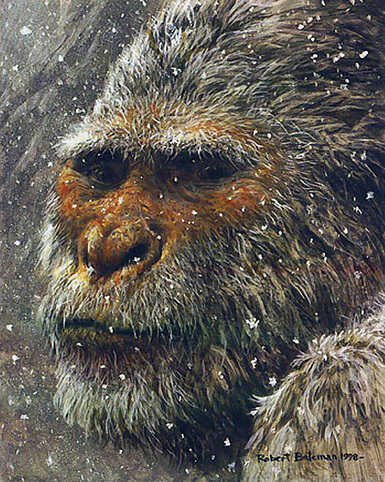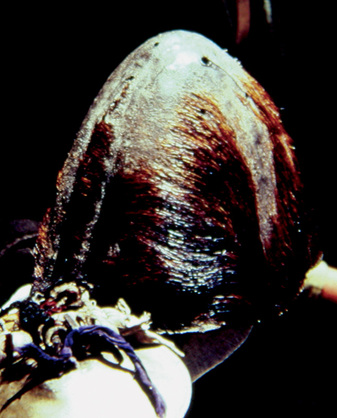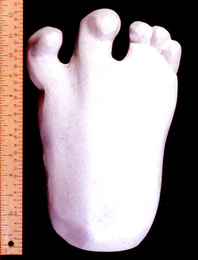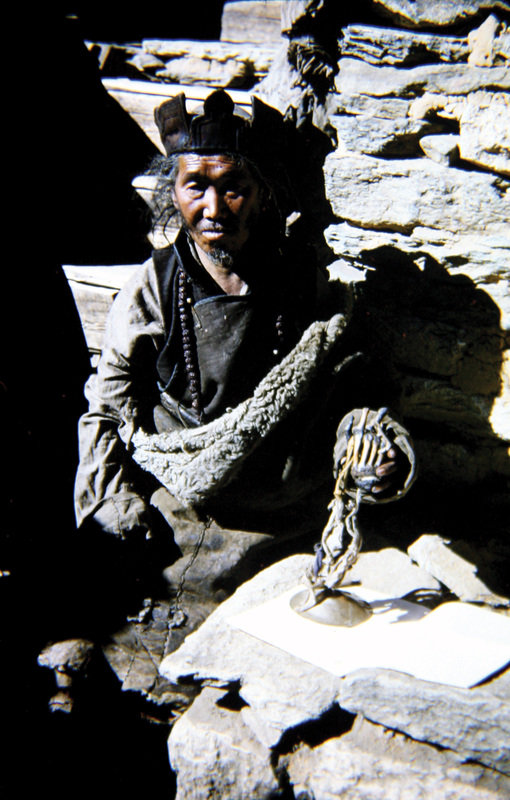POSSIBLE RELATED HOMINOIDS GALLERY
|
Despite many sightings by both
professionals and others, there is no known photograph of a Russian Snowman (also almasty, kaptar and other local names). Footprints have been found and also vacant rough shelters that are attributed to the species. The first image seen at the left is based on general descriptions. |
|
The Karapetian Hominoid.
|
Zana with her newborn.
|
The next image (Karapetian hominoid) is based on a description provided by Dr. Karapetian (a medical doctor) who personally examined a man of this nature. The next image (Zana) is based on descriptions of a female of the species who was habituated by village people (late 1800s) and had children by human partners. The artwork was created by Brendon Bannon, a professional artist, at my request. Although the Russian snowman shares many of the same features as the sasquatch, they are not considered the same species. I believe it is reasonable to speculated that the Russian snowman may have migrated into North America over the Bering Strait land bridge and is confused with the sasquatch when it is sighted. |
|
The founders of hominoid research in Russia. (Left to right) Boris Porshnev, Alexander Mashkovtsev, Pyotr Smolin, Dmitri Bayanov, and Marie- Jeanne Koffmann. (Photo taken January 1968.) |
The leading authority on the Russian
snowman is Dmitri Bayanov, Moscow, Russia. His book, In the Footsteps of the Russian Snowman (Crypto-Logos Publishers, Moscow Russia, 1996) provides remarkable accounts of the species. it is bordering on impossible to concluded that firm evidence of its existence is not somewhere within the “Russian establishment.” |
|
Traditional artwork showing a yeren.
|
Hard evidence supporting the existence of the yeren or
Chinese wild man, is rare. There are a few footprint casts and alleged hair strands, but that’s about all. Traditional stories and sighting are the mainstay of evidence. From what we know it is a fairly tall (up to 6 feet, 5 inches) and leaves footprints up to between 14 and 15 inches long. The prints appear similar to those of the sasquatch. Beds made of forest material have been found and attributed to the creature, along with possible feces, but as with the sasquatch, there is nothing to substantiate the connection. The main Chinese scientist studying the yeren is Dr. Zhou Guoxing. He was originally quite enthusiastic as to the creature’s possible existence, but lately (2012) has emphatically stated: "There is no wild man in this world. I've visited every place where the wild man was reported in China. I've studied everything related to the wild man including hair, skulls and specimens. All of them are dyed human hair or come from monkeys and bears." |
|
The creatures seen here in this old drawing are referred to as “Sinsin.” The information provided relative to this drawing states, “Sinsin lives in mountainous ravines, resembles an ape, has human face and limbs, head hair is long, the head and face ‘are put straight.’ Its voice is like the crying of an infant and the barking of a dog.” |
These are the hands and feet of an unknown primate that was killed in Zhejiang Province in 1957. A local school teacher cut them off the dead oddity and preserved them. Analysis by Dr. Guoxing revealed that they don’t identify with the yeren. They are simply those of a very large unidentified monkey. It could be, of course, that this creature would be taken as a yeren if it were briefly sighted in the forest. |
|
A five foot tall wood carving seen in a shop high in the mountains in Taiwan. It probably represents the yeren.
|
A Chinese sculpture showing some sort of a ape-like humanoid interacting with people. It appears the Chinese have stories that involve such beings. The same is true of North American aboriginal people and the sasquatch.
|
|
An art depiction of the Yowie by Barry Olive.
|
Descriptions of the Australian yowie are essentially the same as those of the sasquatch. They are so close that it appears they are the same creature. Aboriginal legends related to the yowie appear to go back to the origins of the people themselves, just as the sasquatch goes back to the origins of Native people in North America. A pictograph of a “giant hair-covered man” has been found (image at lower left), and although we don’t know its actual age, it is certainly very old. The first reported sighting of a yowie by a European was in 1848. Since that time, there have been about 300 well-documented incidents. As the soil in Australia is most often very dry and hard, footprints are difficult to find. Nevertheless, there are some photographs and footprint casts. The full history of the yowie has been documented by Paul Cropper and Tony Healy in their book, The Yowie: In Search of Australia’s Bigfoot (Strange Nation, Sydney, Australia, 2006). Astounding evidence is provided, but as yet no photograph of the creature has come to light. The first photograph on the top left is an artistic rendering by Barry Olive. The eyes are blank to illustrated that this is what people see when vehicle headlights strike the creature. (Left) Andre Claydon holds a cast he made of a giant
footprint found near Springbrook, Queensland, 1998. (Right) One of several 13-inch (approximately) possible yowie footprints found at Barrington Tops, New South Wales, 1986. |
A Yalanji pictograph showing a, “giant hair-covered man.”
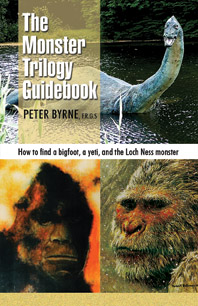
An outstanding book by Peter Byrne entitled, The Monster Trilogy Guidebook: How to Find a Bigfoot, a Yeti, & the Loch Ness Monster, is a “must read” for those interested in the yeti. Byrne brings to the table his personal experiences in searching for the creature. The book will be available from Hancock House Publishers late spring, 2013.
Gallery Navigation
All images in this presentation are from the Murphy/Hancock Photo Library or other restricted sources and are under copyright where applicable.
Please contact <sales@hancockhouse.com> for details on usage.


